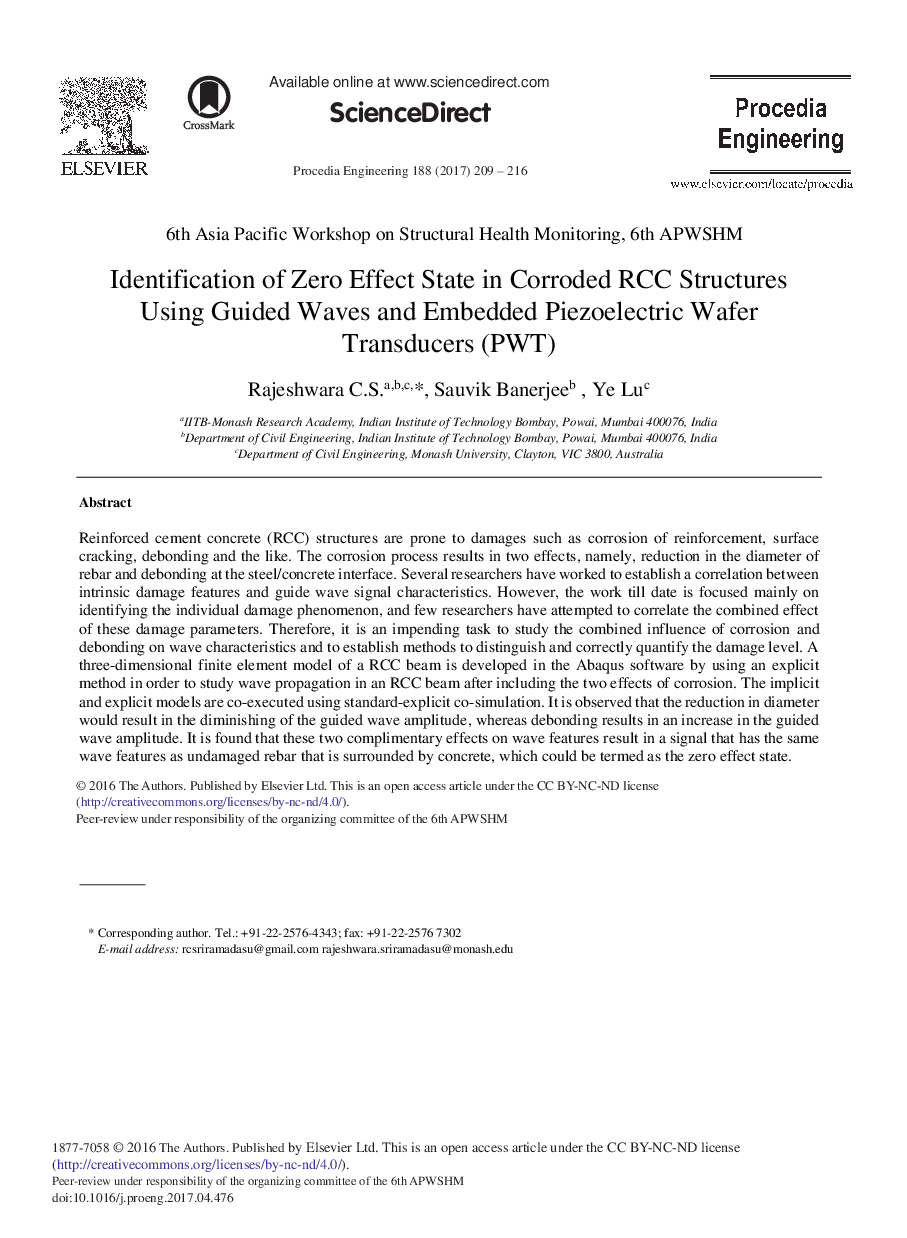| کد مقاله | کد نشریه | سال انتشار | مقاله انگلیسی | نسخه تمام متن |
|---|---|---|---|---|
| 5027805 | 1470638 | 2017 | 8 صفحه PDF | دانلود رایگان |

Reinforced cement concrete (RCC) structures are prone to damages such as corrosion of reinforcement, surface cracking, debonding and the like. The corrosion process results in two effects, namely, reduction in the diameter of rebar and debonding at the steel/concrete interface. Several researchers have worked to establish a correlation between intrinsic damage features and guide wave signal characteristics. However, the work till date is focused mainly on identifying the individual damage phenomenon, and few researchers have attempted to correlate the combined effect of these damage parameters. Therefore, it is an impending task to study the combined influence of corrosion and debonding on wave characteristics and to establish methods to distinguish and correctly quantify the damage level. A three-dimensional finite element model of a RCC beam is developed in the Abaqus software by using an explicit method in order to study wave propagation in an RCC beam after including the two effects of corrosion. The implicit and explicit models are co-executed using standard-explicit co-simulation. It is observed that the reduction in diameter would result in the diminishing of the guided wave amplitude, whereas debonding results in an increase in the guided wave amplitude. It is found that these two complimentary effects on wave features result in a signal that has the same wave features as undamaged rebar that is surrounded by concrete, which could be termed as the zero effect state.
Journal: Procedia Engineering - Volume 188, 2017, Pages 209-216